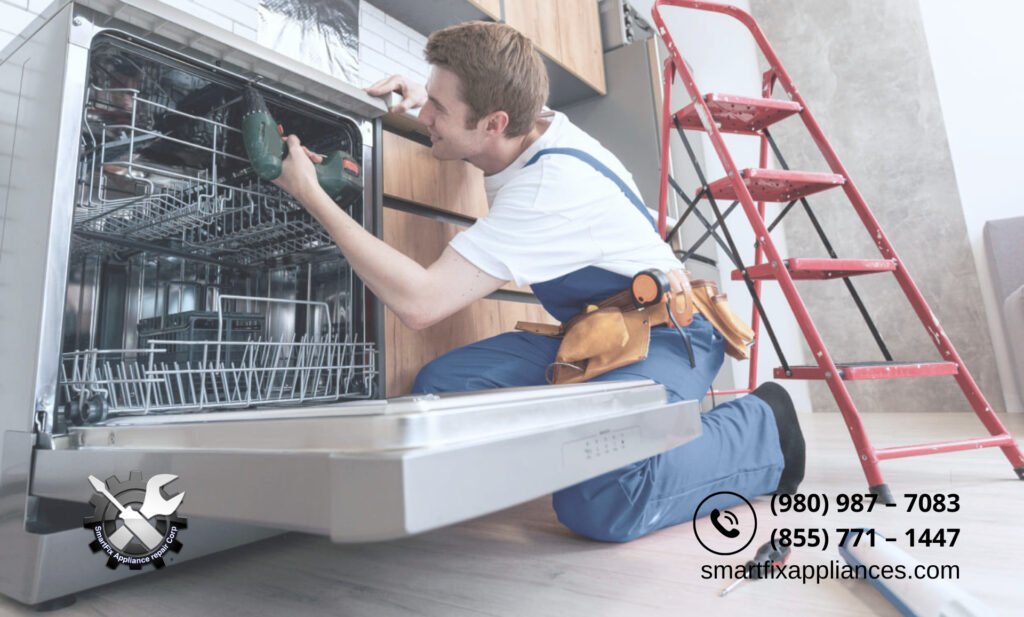Everything You Need to Know About Garbage Disposals
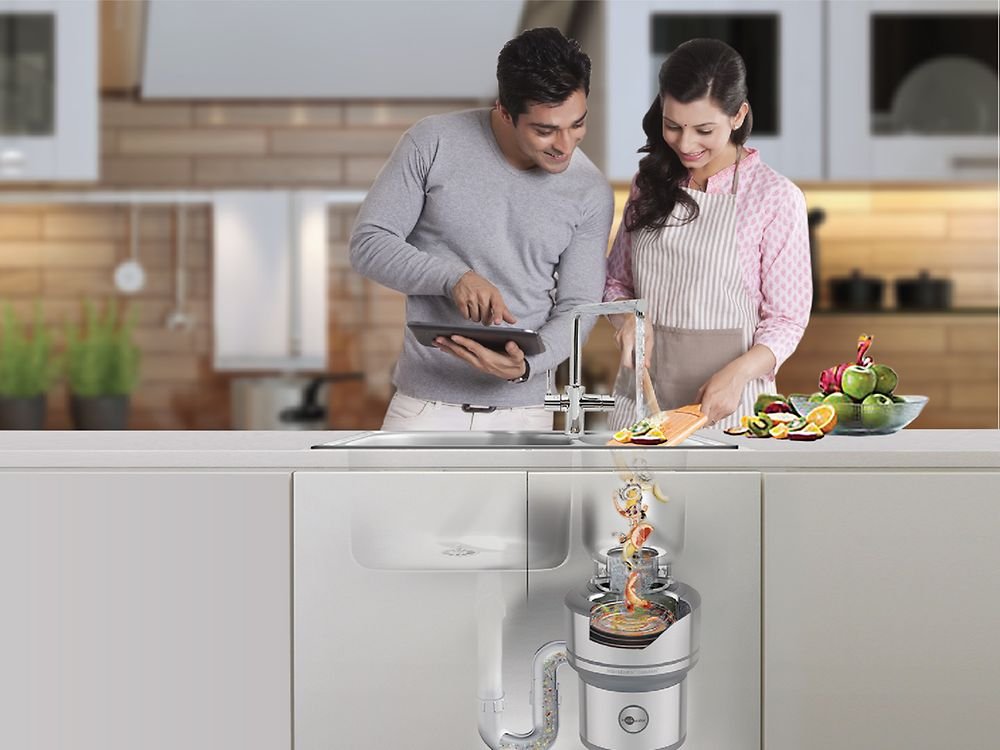
Garbage disposals are a common yet often misunderstood kitchen appliance. This article aims to demystify them by providing a comprehensive overview, including their definition, benefits, types, selection criteria, installation, maintenance, common issues, and expert tips. Whether you’re considering installing a new garbage disposal or looking to maintain your existing one, you’ll find all the essential information right here.
Significance of Garbage Disposals in Everyday Life
Garbage disposals play a crucial role in maintaining a clean and efficient kitchen. They help manage food waste more effectively, reduce household trash, and promote a more hygienic environment by preventing unpleasant odors. By understanding how they work and how to take care of them, you can ensure that your kitchen remains a functional and pleasant space for your family.
What is a Garbage Disposal?
A garbage disposal is a handy device installed under your kitchen sink. It works by shredding food waste into tiny particles that can easily pass through your plumbing system. When you turn on the disposal, its motor activates a set of blades that grind the food waste. The continuous flow of water helps flush these particles down the drain, reducing the chance of clogs and keeping your kitchen cleaner.
Main Components and Structure
To fully appreciate how a garbage disposal functions, it’s helpful to understand its main components:
- Motor: Powers the grinding blades and is typically measured in horsepower (HP).
- Grinding Chamber: Where the food waste is broken down into smaller particles.
- Grinding Plate/Blades: The mechanisms that shred the food waste.
- Discharge Pipe: The outlet that directs the ground waste particles into your plumbing system.
Reset Button: A safety feature that resets the unit in case of overload or malfunction.
Benefits of Using a Garbage Disposal
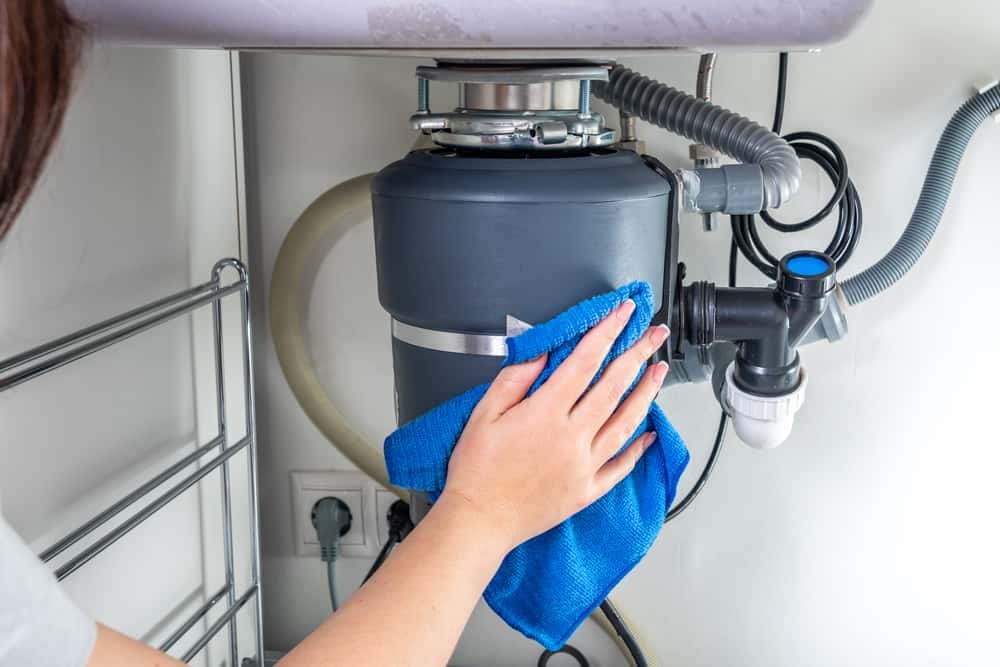
Environmental Benefits
Reduces Landfill Waste One of the primary environmental benefits of using a garbage disposal is the significant reduction in landfill waste. When food waste is processed through a garbage disposal, it is ground into fine particles and sent through the plumbing system to wastewater treatment plants. This process decreases the amount of organic waste that ends up in landfills, helping to conserve space and reduce the overall volume of waste.
Decreases Methane Emissions Organic waste decomposing in landfills produces methane, a potent greenhouse gas that contributes to global warming. By diverting food waste from landfills through the use of garbage disposals, the amount of methane emissions is significantly reduced. This helps in mitigating the impact on climate change and promoting a healthier environment.
Convenience and Hygiene
Eliminates Odors from Trash Bins Food waste sitting in your trash bin can quickly lead to unpleasant odors, especially in warm weather. By disposing of food scraps immediately via a garbage disposal, you can eliminate these odors, keeping your kitchen smelling fresh and clean. This not only enhances the overall kitchen environment but also prevents the attraction of pests.
Reduces Trash Trips With a garbage disposal, the frequency of taking out the trash is greatly reduced. Since food waste is processed and flushed away, your trash bin fills up more slowly, requiring fewer trips to the outdoor trash can. This convenience saves time and effort, particularly for households that generate a significant amount of food waste.
Time and Effort Savings
Using a garbage disposal streamlines kitchen cleanup, saving you both time and effort. Instead of scraping food scraps into the trash and dealing with messy, leaking bags, you can simply rinse plates and dispose of waste directly into the sink. This quick and efficient method of waste disposal frees up your time for other activities and reduces the hassle associated with traditional trash disposal methods.
Types of Garbage Disposals
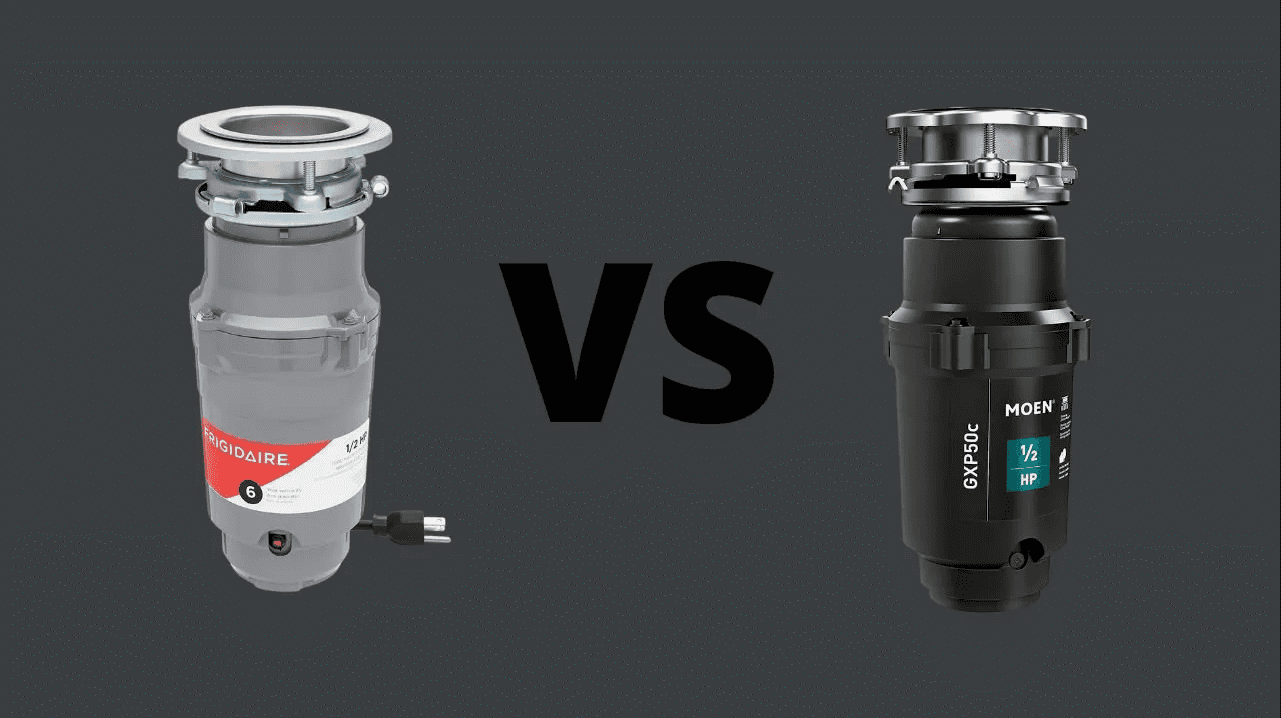
Continuous Feed Disposals
Advantages
- Ease of Use: Continuous feed disposals are the most common type and are very user-friendly. Simply turn on the water, switch on the disposal, and add food waste as needed.
- Convenience: They allow for the continuous addition of food waste, making them ideal for busy kitchens or when preparing large meals. This means you don’t have to wait for a chamber to fill before grinding.
- Availability: These disposals are widely available and come in various sizes and power levels to suit different needs and budgets.
Disadvantages
- Safety Concerns: Because they operate continuously, there is a higher risk of injury if utensils or fingers accidentally enter the disposal while it’s running.
- Water and Energy Use: Continuous feed models require running water while in use, which can lead to higher water and energy consumption.
- Potential for Overloading: If not used carefully, they can be overloaded, leading to jams or damage.
Batch Feed Disposals
Advantages
- Safety: Batch feed disposals only operate when the disposal cover is in place, reducing the risk of accidental injury. This feature makes them a safer choice, especially in households with children.
- Controlled Usage: They handle food waste in batches, which can help prevent overloading and reduce the likelihood of jams. This controlled usage ensures efficient and smooth operation.
- Water and Energy Efficiency: Because they don’t require running water continuously and only operate when the cover is securely in place, they tend to use less water and energy.
Disadvantages
- Slower Disposal Process: Since you need to wait for the disposal chamber to fill before grinding, the process can be slower compared to continuous feed models. This might be less convenient during meal preparation.
- Less Common: Batch feed disposals are less common and may have fewer models to choose from, potentially limiting options for consumers.
- Higher Cost: They can be more expensive than continuous feed disposals due to the added safety and control features.
How to Choose the Right Garbage Disposal
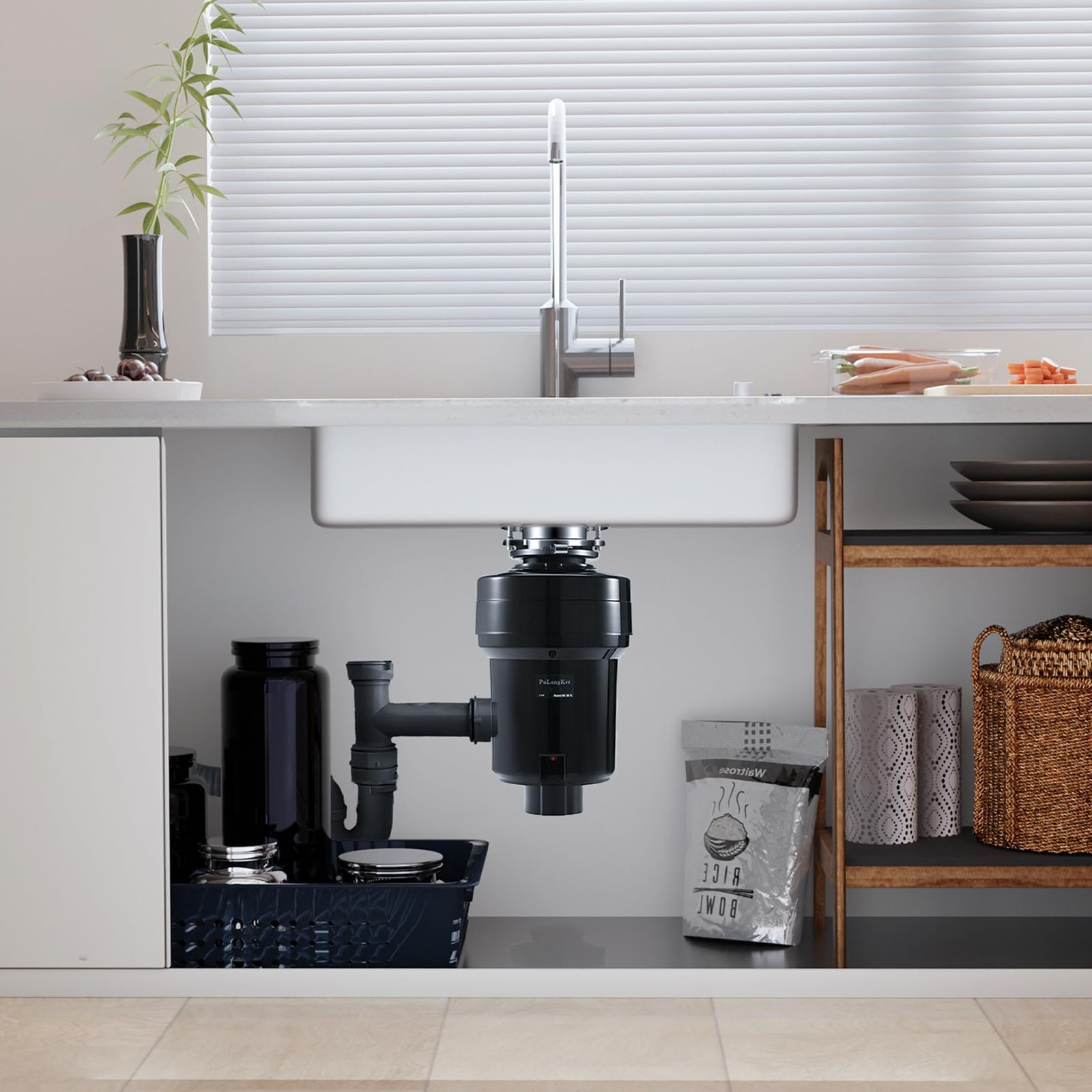
Motor Power
The motor power of a garbage disposal is a key factor in determining its performance and efficiency. Measured in horsepower (HP), disposals typically range from 1/3 HP to 1 HP or more.
- 1/3 HP: Suitable for small households with light usage, handling soft foods and small amounts of waste.
- 1/2 HP: Ideal for moderate usage in small to medium households, capable of handling a wider variety of food scraps.
- 3/4 HP: A good balance for larger families, offering more power to handle tougher waste like small bones and fibrous vegetables.
- 1 HP or higher: Best for heavy usage, such as in large households or frequent cooking, capable of grinding almost any food waste efficiently.
Size and Capacity
Consider the size and capacity of the garbage disposal unit, which should fit comfortably under your sink and meet your household’s waste disposal needs.
- Compact Models: These are ideal for smaller kitchens with limited cabinet space. They are suitable for light to moderate use.
- Standard Models: Provide a balance between size and capacity, suitable for most average households.
- Large Capacity Models: Designed for heavy use, these models are ideal for large families or those who cook frequently and need to dispose of larger amounts of food waste.
Noise Reduction
Noise levels can vary significantly between different garbage disposal models. If a quieter operation is important to you, look for disposals with noise-reduction features.
- Sound Insulation: Many models come with sound insulation to reduce the noise produced during operation.
- Anti-Vibration Technology: Helps to minimize vibrations, further reducing noise.
- Quiet Operation Models: Some high-end models are specifically designed to operate quietly, making them ideal for open-plan kitchens or households where noise is a concern.
Materials and Durability
The materials used in the construction of the disposal, particularly the grinding components, greatly affect its durability and longevity.
- Stainless Steel: Grinding components made of stainless steel are highly durable and resistant to rust and corrosion, ensuring long-term performance.
- Galvanized Steel: While more affordable, galvanized steel is less durable and prone to rust over time.
Additional Features and Safety Technologies
Modern garbage disposals come with various additional features and safety technologies to enhance their performance and user experience.
- Auto-Reverse Function: Helps to prevent jams by automatically reversing the grinding plate’s direction if a blockage is detected.
- Anti-Jamming Technologies: Features that help prevent and clear jams, making the disposal easier to maintain.
- Overload Protection: Automatically shuts off the disposal if it becomes overloaded, protecting the motor from damage.
Antimicrobial Protection: Built-in antimicrobial properties to reduce odors and prevent the growth of bacteria.
Installation and Maintenance
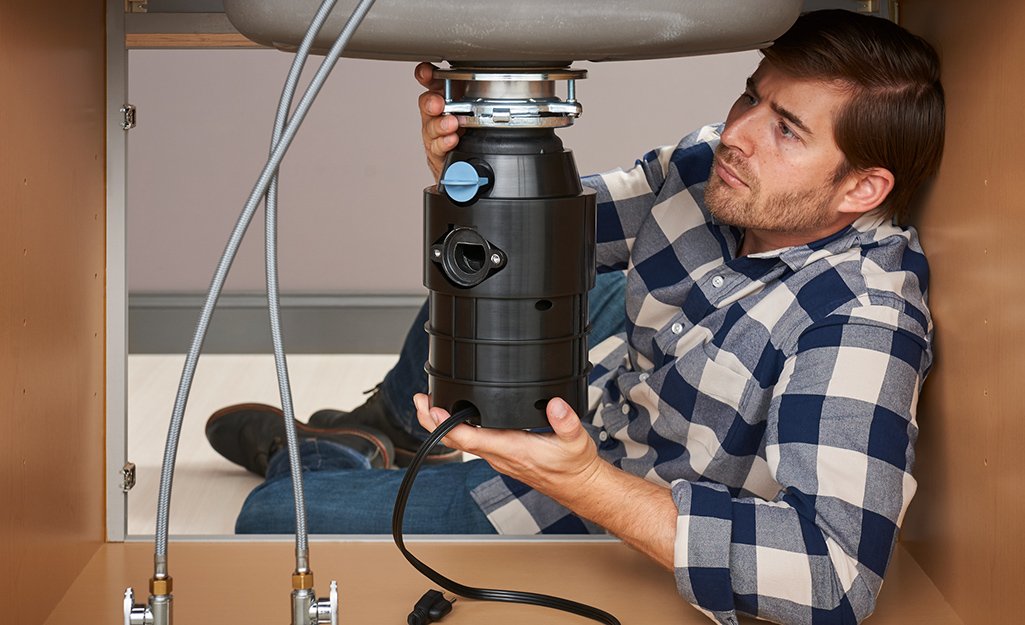
Step-by-Step Installation Guide
- Turn Off Power and Water: Before starting the installation, ensure the power to the disposal unit is turned off at the circuit breaker. Also, turn off the water supply under the sink.
- Remove the Old Disposal (if applicable): Disconnect the existing disposal unit by removing the mounting assembly and drain connections. Take care to properly dispose of or recycle the old unit.
- Install the Mounting Ring: Attach the mounting ring to the sink flange. Apply plumber’s putty around the sink flange to create a watertight seal. Press the flange into the sink hole and secure it with the mounting ring and bolts from underneath.
- Prepare the Disposal Unit: Assemble any necessary parts according to the manufacturer’s instructions. If your model requires an adapter for the drain pipe, attach it as instructed.
- Attach the Disposal to the Mounting Ring: Align the disposal unit with the mounting ring and twist it into place. Ensure it is securely fastened.
- Connect the Plumbing: Reconnect the drain pipe to the disposal unit. Make sure all connections are tight to prevent leaks. If necessary, attach the dishwasher drain hose to the disposal unit.
- Test the Installation: Turn on the water supply and check for leaks around all connections. Power up the disposal and run water through it to ensure it operates correctly and quietly.
Key Points and Tips
- Read the Manual: Always follow the manufacturer’s installation instructions specific to your model for best results.
- Use Proper Tools: Ensure you have the necessary tools such as a wrench, screwdriver, and pliers before starting.
- Check for Leaks: After installation, thoroughly check all connections for any signs of leaks and tighten as needed.
- Ensure Proper Alignment: Make sure the disposal is correctly aligned with the sink and drain pipes to avoid misalignment issues that could lead to leaks.
Cleaning and Unclogging
- Regular Cleaning: To keep your garbage disposal fresh and odor-free, clean it regularly. You can do this by grinding a mixture of ice cubes and a cup of baking soda, followed by running cold water. This helps remove buildup and keeps the blades sharp.
- Unclogging: If you encounter a clog, turn off the disposal and use a plunger or a plumber’s snake to clear the blockage. Avoid using chemical drain cleaners, as they can damage the disposal and pipes.
How to Prevent Breakdowns
- Avoid Hard or Fibrous Waste: Refrain from putting large bones, fruit pits, or fibrous vegetables (like celery) into the disposal, as these can cause jams or damage the grinding components.
- Run Cold Water: Always run cold water while the disposal is in use and for a few seconds after turning it off. Cold water helps solidify fats and oils, making them easier to grind and flush away.
- Regular Use: Use your disposal regularly to prevent rust and corrosion. A disposal that is not used often can develop problems more quickly.
- Check for Obstructions: Periodically check the disposal for any objects that may have accidentally fallen in. Remove any obstructions carefully with the power turned off.
Common Problems and Solutions
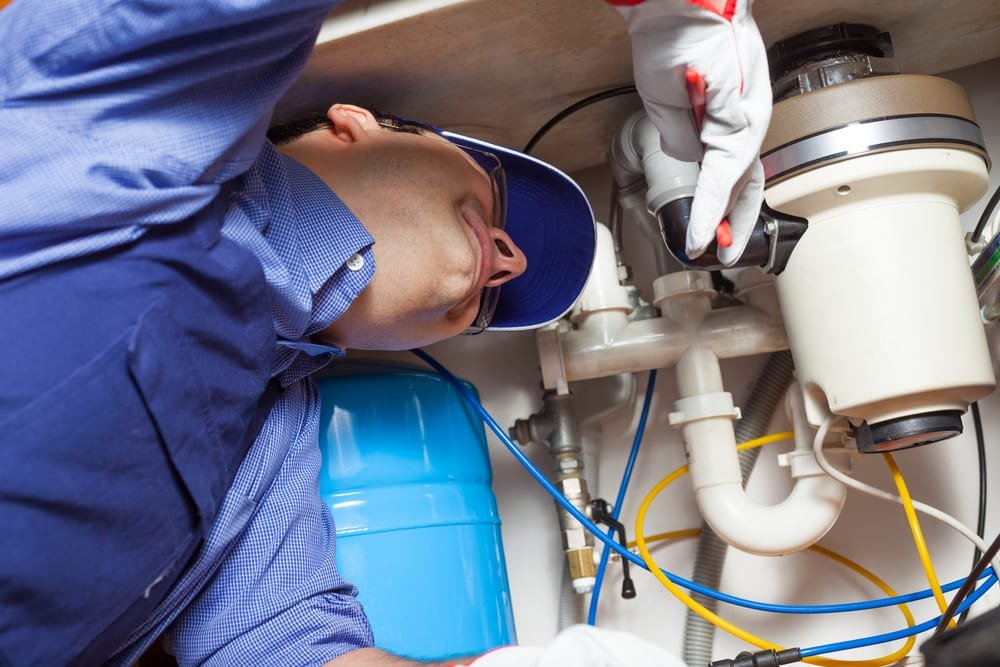
Disposal Doesn’t Turn On
Possible Causes:
- Power Supply Issues: Ensure the disposal is plugged in and that the circuit breaker hasn’t tripped. Check if the outlet is functioning by plugging in another device.
- Reset Button: Most disposals have a reset button located on the bottom of the unit. Press it to reset the motor.
- Faulty Switch or Wiring: If power issues persist, the switch or internal wiring might be faulty and may require professional inspection.
Solutions:
- Verify power connections and reset the unit if necessary.
- If the issue continues, check for wiring problems or consider calling a professional technician.
Noise and Vibration
Possible Causes:
- Loose Parts: Vibrations may occur if the disposal or its mounting components are loose.
- Foreign Objects: Small objects like utensils or bones may be causing noise or vibration.
- Wear and Tear: Over time, internal components may wear out or become misaligned.
Solutions:
- Tighten any loose mounting parts and check for foreign objects. Remove any obstructions carefully with the power turned off.
- If unusual noises persist, it may indicate a need for internal repairs or replacement of parts.
Clogs and Slow Draining
Possible Causes:
- Excessive Waste: Overloading the disposal with too much waste can lead to clogs.
- Grease Build-Up: Grease and oils can solidify and cause blockages.
- Pipe Obstructions: Debris may be caught in the pipes leading to slow drainage.
Solutions:
- Avoid overloading and run cold water while the disposal is in use.Batch Feed Disposals
- Clean the disposal by grinding ice cubes and baking soda, and flush with hot water to remove grease.
- Use a plunger or a plumber’s snake to clear any blockages in the pipes.
Expert Tips and Recommendations
Proper Usage of the Disposal
- Use Cold Water: Always use cold water while running the disposal to help solidify grease and fats, making them easier to grind.
- Feed Waste Gradually: Avoid overloading the disposal by feeding waste in small amounts and allowing the unit to process it thoroughly.
What Waste Can and Cannot Be Disposed
- Can Be Disposed: Fruit and vegetable scraps, small amounts of meat, coffee grounds, and egg shells.
- Cannot Be Disposed: Large bones, fruit pits, fibrous vegetables (e.g., celery), grease, and oils. These items can cause jams or damage the disposal.
Tips for Extending the Lifespan of the Device
- Regular Cleaning: Clean the disposal regularly to prevent odors and buildup.
- Avoid Hard Objects: Do not dispose of hard items like bones or large pits.
- Use Properly: Run the disposal regularly to keep it in good working condition and prevent rust.
Conclusion
Garbage disposals are invaluable tools that contribute to a cleaner and more efficient kitchen. By understanding the different types, knowing how to choose the right model, and following proper installation and maintenance practices, you can ensure your disposal operates smoothly and lasts for years. Address common problems promptly and use the device correctly to enjoy all the benefits it offers.
At SmartFix, we’re dedicated to providing top-notch appliance repair services, including expert installation and maintenance of garbage disposals. Our skilled technicians are committed to delivering reliable solutions that keep your kitchen running smoothly. Choose SmartFix for professional, efficient service and experience the difference our expertise can make.
For all your garbage disposal needs, from installation to repair, contact SmartFix today. Our team is here to ensure your appliance performs at its best.
Frequently Asked Questions (FAQ)
- What should I do if my garbage disposal isn’t turning on?
- Check the power supply, reset the unit, and ensure there are no wiring issues. If problems persist, contact a professional.
- How can I reduce noise from my garbage disposal?
- Tighten any loose parts and check for foreign objects. Consider models with noise-reduction features for quieter operation.
- What should I do if my disposal is clogged?
- Avoid overloading, use cold water, and clean the disposal regularly. For severe clogs, use a plunger or call a plumber.
- How often should I clean my garbage disposal?
- Clean your disposal monthly to prevent odors and buildup, using a mixture of ice cubes and baking soda.
Do you want to know more or need a consultation?
Contact us and we will get back to you.
[arrow-down]


